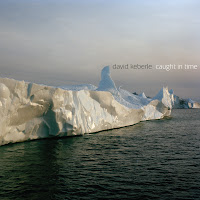Gheorghe Costinescu, Romaninian born-and-bred, student of Messiaen and Stockhausen, Berio, Ussachevsky and Chou Wen-chung, New York resident since 1969. . . and composer of note.
I have had the opportunity to experience his DVD Jubilus & Pantomime (Ravello RR7822), and I am glad of it. The program centers around a retrospective concert given at Columbia's Miller Theatre and the performance of two of his chamber works, "Jubilus" and "Pantomime," by the Ensemble Sospiso under the direction of Costinescu and Rand Steiger, respectively.
The in-concert performances are shown, followed by a discussion of the "Pantomime" score by the composer and, finally, a lengthy interview.
Costinescu's works on the DVD are quite theatrical and visual as well as aural. This music itself is post-serialist and architecturally intricate, filled with dynamic interplay and contrapuntal complexities. The music in itself is top-drawer modernism. With this DVD, however, we get to experience the visual impact of the performances, which is considerable.
"Jubilus" is rather short but quite dense. It is scored for vocalist, body percussionist and trumpet, who together create a tightly woven music of phonemic-pitched vocal utterance, a complicated series of coordinated hands, feet and mouth on the part of the percussionist to create an avant sort of pre-beat-boxing melange, and an intricate, wide-ranging trumpet part. The aural result is fascinating as is the visual imagery of the three in performance.
"Pantomine" is longer and considerably more involved in the visual and musical sense. It is a work for small chamber orchestra that calls for various coordinated movements of the non-stationary players across the stage. They circle, cross each other, assume various positions and clusterings and otherwise enact a kind of elemental ballet as they play their parts. The music has aleatoric elements and moments that are rigorously notated. The stylistic dimensions vary from serial preciseness to a kind of communal anarchy of shifting motifs, and on to a rather lovely chorale passage towards the end.
As the illuminating discussion of the score makes clear, there are quite precisely conceived "choreographies" of movement built-in to coincide synchronously with the musical simultaneities of the score. It is in that sense a logistical feat to give a spirited and faithful performance of the work. That's most certainly what happens here. On first experience the various shifts in position seem puzzling. Do the movements add to the appreciate of the performance event? The answer for me at least has been, yes, once the interrelationships of movement and sound are understood more fully.
The ensuing discussions with the composer are quite revealing. He is a prototypical avant gardist in that there is a strong conceptual element in his music, something that enlightens listeners when brought forward through discussion. Costinescu and the directors of Ensemble Sospiso make all that up-front in the ensuing dialog.
In the end Jubilus & Pantomine takes full advantage of the DVD medium to bring you some important Costinescu works in performance with all the critical visual elements in play. It also makes for a lively mini-portrait of Costinescu the man, the conceptualist and the composer.
Well done! Recommended.




















